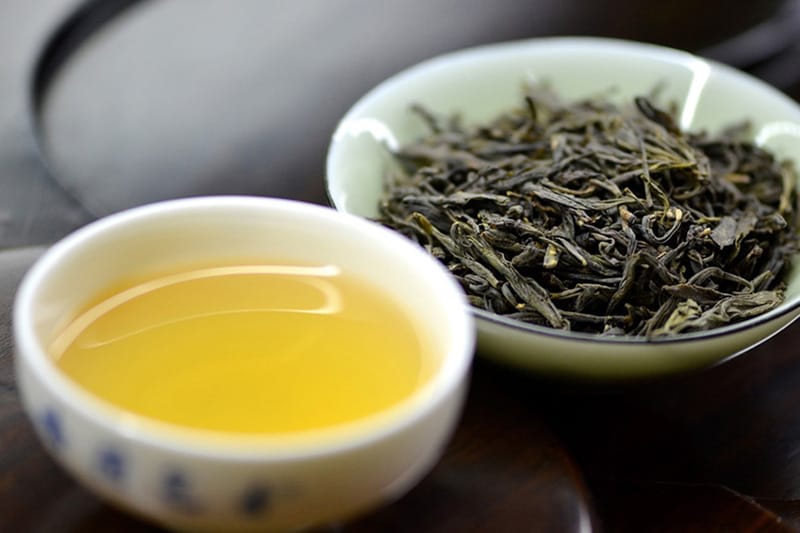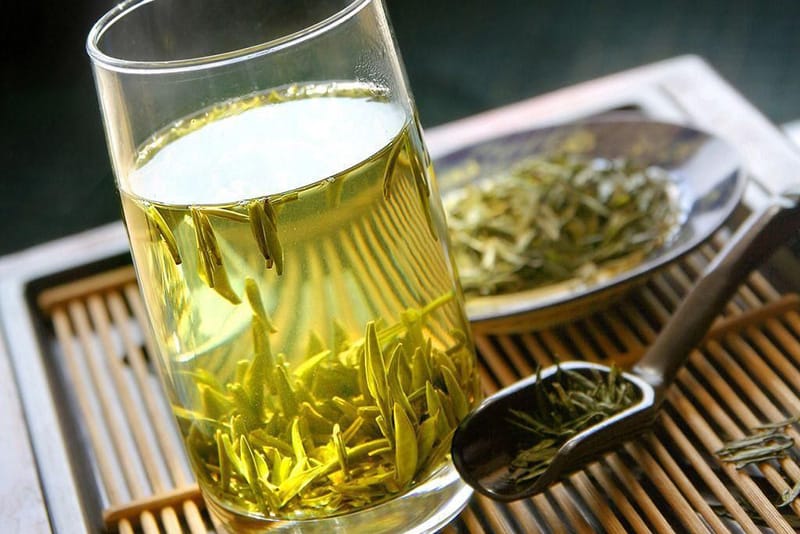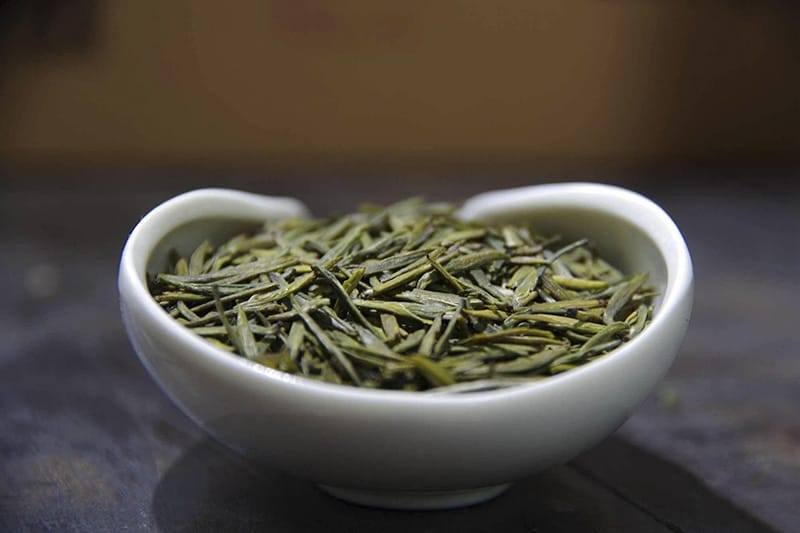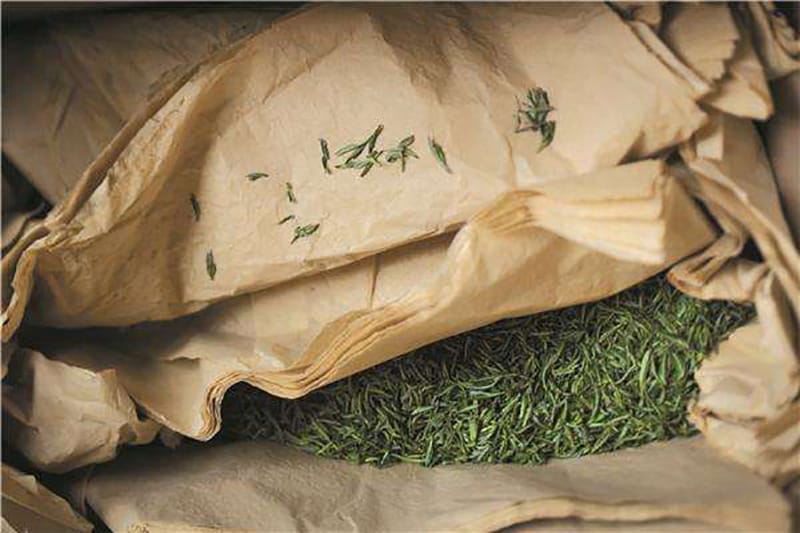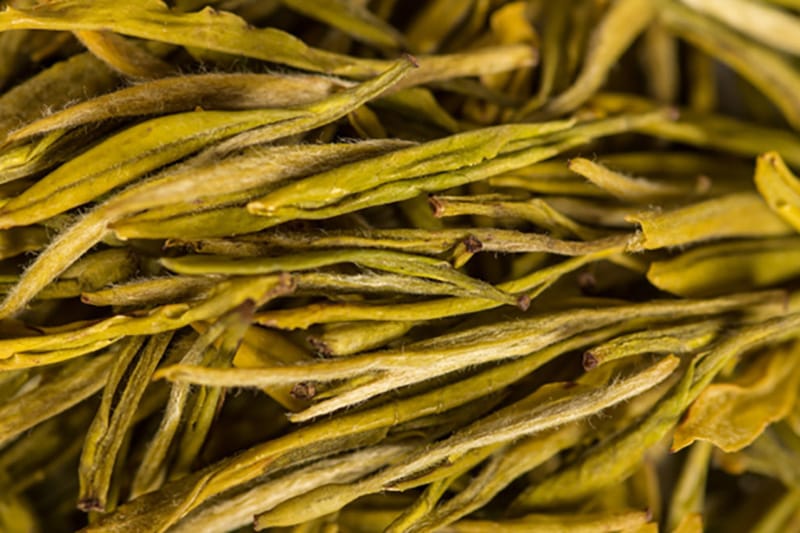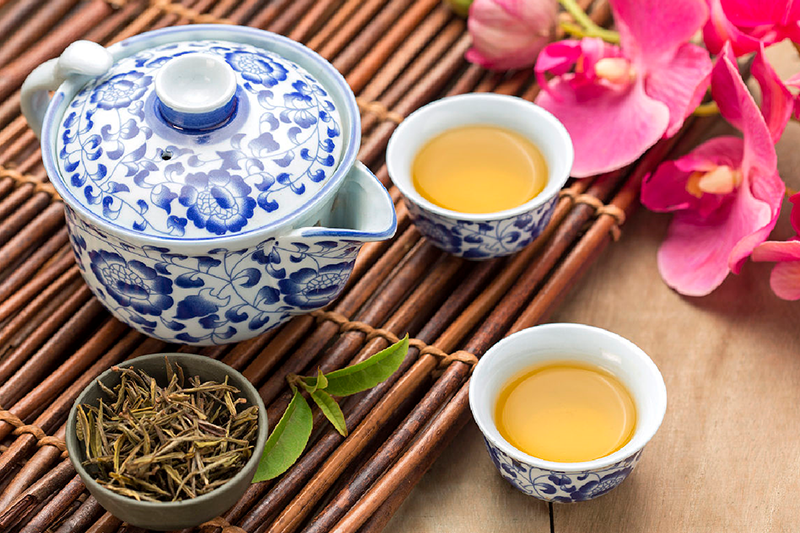Last Updated on 06/27/2022 by Desmond
Yellow is a specialized color for the Royal in ancient China, the symbol of noble. Amongst the 6 tea types, there is a precious one – Yellow Tea. In the past, yellow tea was a tribute that only the royal and priest could be served. Yellow tea is still rare now, and many people may never hear of it.
CONTENT
What Is Yellow Tea
Yellow tea belongs to a slightly fermented tea. Its processing is similar to green tea, just one more step called “sealing yellow.” As a result, leaves and infusions will turn yellow. Compared with green tea, yellow tea got less astringency and a vegetal smell than a more mellow and smooth mouthfeel.
History
According to the ancient books, the name yellow tea first appeared in Tang Dynasty. Actually, they were not the true yellow tea. They were just made from the yellow buds from some particular tea trees. The authentic yellow tea came in Ming Dynasty, and it was said from an accident in green tea processing.
At that time, green tea was the trend. Tea masters could not process the fresh leaves in time sometimes. After fixation, they would cover cloth on the leaves to prevent the bugs bite and plan to leave the following jobs to the second day. But the leaves just after fixating are very hot and retain much water. Under the hyperthermal, leaves were cooked and turned yellow.
By the standard, these yellowed leaves are low-quality and taste worst. This situation often happened, until one time, some tea masters found that the tea made from these yellowed leaves tasted awesome. They kept researching and finally found a way to process yellow tea. The emperor also loved the tea, and for a long time, yellow tea was taken as a royal tribute.
Primary Producing Regions
Yellow tea production is primarily concentrated in a few China provinces: Hunan, Hubei, Zhejiang, Sichuan, and Anhui. Some regions in Guangdong and Guizhou also participate, but they got limited popularity and yield. Each area got its own technique for processing, leading to the different yellow tea flavors. Korea also got yellow tea, but it is just the same name and not the authentic one.
Characteristics & Flavor
According to the different picking standards, yellow tea is classified into 3 types:
- Yellow Bud Tea;
- Yellow Small Tea;
- Yellow Large Tea;
Except for the yellow large tea, the others are all made from the tenderest buds and leaves. Yellow tea processing is also low-degree; some even skip the rolling. It makes many fuzzes still retained on the buds, which are called “Hao” and often seen on white tea. They are rich in amino acids and provide much of the fresh tastes.
The dried leaves of yellow tea show yellow-green, with a herbaceous smell, similar to green tea. After brewing, the infusion is a pure yellow, sending a mild and full aroma. About the mouthfeel, yellow tea still got some astringency but is not as strong as green tea. Due to the slight fermenting, it tastes much more mellow and smooth. The buds tea with much fuzz on will taste brisker. Floral and sweetness are the primary flavor of yellow tea. To the Weishan Maojian, it even got a unique smoky flavor.
Why Yellow Tea Is So Rare
Not only in the past, but yellow tea is also scarce even nowadays. In China, the yellow tea annual output can not reach 1% of the total tea yield. It’s not because the flavor is not good; yellow tea processing is indeed complicated.
Sealing yellow is the most essential step in yellow tea processing, which makes it distinguish from green tea. It is a challenging technology, and even the most senior tea master can not ensure success every time. Besides, most of the leaves requirements are the same as green tea – the tenderest buds and leaves in a year. Face to the limited source, tea factories prefer to process them into green tea, which is much more popular, to get more profits.
Niche and rarity are always the yellow tea’s tag; to increase the yield hard may cause a counter-productive and makes it lose the market competitiveness. These characteristics also impede the yellow tea from development; no tea factory wants to study how to improve the sealing yellow processing into a line operation. It leads to a vicious circle.
In recent years, due to the hot trend of green tea, some ancient yellow tea types like Junshan Yinzhen and Weishan Maojian are beginning to be processed into green tea. And the Haimagong tea and Beigang Maojian are almost lost; only a few tea masters still stick to production.
The Unique Sealing Yellow Processing
So, what is the sealing yellow processing?
We know that green tea belongs to non-fermented tea. Leaves during fixation, the internal active enzyme will break by the heat and make the natural fermentation stop. All the teas need to be fixation except for white tea. But actually, after a period of time, the leaves will ferment again. Tea masters will make different types of tea by controlling this re-ferment process.
Sealing yellow is a step after fixation. Leaves still contain much water inside, and frying makes them be at a hot temperature; the water evaporates and creates more heat. Tea masters let the leaves ferment aging by using this heat. The process is like braising in cooking. Typically, there are 3 ways of sealing yellow:
- Use a wet cloth to cover the leaves, provide more water and focus the heat;
- Use a dried paper to pack the leaves and focus the heat;
- Only to pile leaves together, lock the heat inside them, which is similar to the dark tea piling;
They all rely on hyperthermal to make the internal ingredients of leaves transform to create a unique flavor. The most obvious is that the leaves will turn yellow because the chlorophyll change. The vegetal smell will go and become a cooked aroma.
Some tea factories only take a low-degree sealing yellow during processing to cater to the people who love green tea. Thus, these yellow teas are similar to green tea, both looks and flavor.
The difficulty of sealing yellow is on to control the degree. If over fermenting, the leaves will be over-cooked, and the taste worsens. If fermenting is not enough, it can reach the standard of yellow tea. Face to the vast and different-quality source leaves, tea masters only process them rely on their experience, and hard to get 100% success. Tea masters who are good at sealing yellow are few, and due to yellow tea is not so popular in the market, these experiences are also hard to pass on.
Ingredients
Tea Polyphenols
Tea polyphenols are the primary nutrition ingredients of tea, and they also play an important role in the benefits that tea brings. Due to yellow tea having been through a slight fermentation, some tea polyphenols have oxidated and changed into other substances and improved the flavor.
Related Reading: Healthy Tea Diet: What Are Tea Polyphenols & 8 Excellent Benefits.
Vitamin
Yellow tea is rich in various vitamins, such as water-soluble B1, B2, B3, PP, B6, B11, Biotin, Creatine, and C. And the lipid-soluble E, K, A, and D. They all can help prevent hypovitaminosis.
Amino Acid
The amino acid content in yellow tea is high to 2-4%, contains over 30 types, and all they are the human body needs. The bud teas contain more amino acids because of the Hao, bringing a more fresh and sweet taste.
Minerals
Yellow tea is rich in minerals, especially what the human body needs: Se, Fl, Mn, Mg, Zn, etc.
Caffeine
Yellow tea belongs to true tea and contains caffeine naturally. The content is between 2%-5%, lower than green tea. And the dosage after brewed is dependent on many factors.
Related Reading: Worry About The Caffeine In Tea? 4 Tips For You!
What Is Yellow Tea Good For
Help Digestion
During the unique processing, various digestive enzymes will be created in yellow tea. They can help the stomach work better on digestion, give adjuvant therapy on dyspepsia and inappetence.
Weight Loss
Under the synergistic effect of digestive enzymes and caffeine, yellow tea also can help speed up the fat burns and reduce their accumulation, leading to a weight loss purpose.
Anti-cancer
Studies show, the antioxidant that yellow tea contains can help remove the free radicals in the human body. It can prevent cancer (especially liver and stomach cancers) effectively. Besides, the antioxidant ability of yellow tea doesn’t reduce by fermentation; from the study result, it is even higher than green tea.
Liver Protection
The liver is an important organ in charge of the body’s metabolism; it balances glucose and lipid metabolism. Yellow tea has a marked effect on preventing and curing hepatitis or other liver diseases. A healthy liver also helps your weight loss plan.
Anti-inflammatory
Just like the other teas, yellow tea also got an excellent anti-inflammatory effect. Study shows that the yellow tea extract is rich in tea polyphenols, which are good at anti-inflammatory. They can help prevent many inflammations of the human body, primarily the oral.
Anti-age
Thanks to tea polyphenols’ benefits of removing free radicals, yellow tea is also good at anti-age. Having yellow tea can help reduce wrinkles and spots, and it is a popular beauty tea.
Yellow Tea Varieties
According to the difference of picking standard, yellow tea can be classified into 3 types:
Yellow Bud Tea – made from the tender buds or one bud to the first leaf
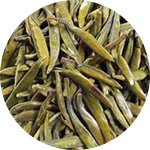
Junshan Yinzhen
Junshan Yinzhen is the only yellow tea in the Chinese 10 famous teas, which originated in Yueyang, Hunan, the Junshan Island in Dongting lake. Unlike the other yellow teas, it is an individual brand so that you don’t feel worried about the fake teas. Junshan Yinzhen’s leaves look like a flat needle, with lots of tiny white fuzzes on the surface, so it is also called “gold-mounted jade.” It got a mild mature straw aroma but tastes very light.
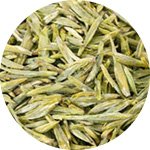
Meng Ding Huang Ya
Meng Ding Huang Ya is originated in one of the Chinese tea culture birthplaces – Yaan, Sichuan. Its leaves haven’t been rolling, just flat because of the drying, and the surface is gloss and with fuzz. The local tea masters increase the yield a lot by subdividing the processing steps. Meng Ding Huang Ya has a full and mellow flavor, with a roasted chestnut-like aroma.
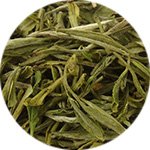
Huoshan Huangya
Huoshan Huangya is originated in Anhui. It doesn’t get a clear picking standard; different source leaves can be made into different grade products. Thus it can cover all the 3 yellow tea types. The Huoshan Huangya made from the tender buds is flat and thin, looks like a bird tongue. It tastes mellow and smooth, with a slight orchid and roasted chestnut aroma.
Yellow Small Tea – made from one bud to the first or the second leaf
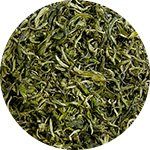
Beigang Maojian
Beigang Maojian comes from Yueyang, Hunan as the same as Junshan Yinzhen. Its earlier name is Yonghu Tea. Due to the fierce competition in the local market, almost all the Beigang Maojian are processed into green tea for sale. The traditional Beigang Maojian yellow tea is hard to see now.
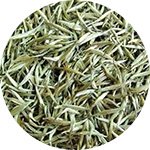
Weishan Maojian
Weishan Maojian is originated in Ningxiang, Hunan. The tea plantations there are build around a temple (Miyin Temple.) A giant Thousand-Hand Guanyin statue seems to bless the tea trees for growing. Weishan Maojian got a unique flavor; it has been through fumatory just like the Lapsang Souchong. So it tastes a robust smoky and mature grain flavor. It can say that Weishan Maojian combines the advantages of yellow, green, and black tea. But in recent years, Weishan Maojian has often been processed into green tea for sale.
Yellow Large Tea – made from one bud to the fourth or the fifth leaf
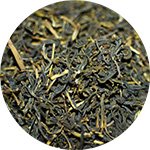
Da Ye Qing
A yellow tea from Guangdong, the source leaves are the same as Pu-erh tea, which is from Yunnan large-leaf type tea trees. Da Ye Qing has an obvious feature – it was processed with stems. So the dried leaves often reach 10-13cm and look big. Da Ye Qing has a robust rice-crust flavor, and it’s more resistant to brew. Due to it being less popular, only a few tea plantations are stick to produce so far.
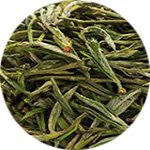
Haimagong Tea
Haimagong tea is originated in Haimagong, Guizhou. There is a habitation of a Chinese minority – Yi. Its earliest name is Zhu Ye Qing Tea, but it changed because one Sichuan tea company squatted the brand. Haimagong tea is dried by a slow fire, so the flavor is strong and with noticeable astringency. Haimagong tea is not so famous, so it can’t form a scaled industry; the quality is also irregular. Most of the products are made and sold by the tea master’s own selves.
Storage Ways
Typically, it’s not recommended to store yellow tea for over 1 year. Because during the storage, yellow tea still keeps fermenting slowly, and the flavor will change. It’s similar to white tea aging, but hard to see the cases about yellow tea aging successfully. Therefore, for yellow tea, it’s better to finish consuming it ASAP.
In the yellow tea storage, 4 following points should be paid attention to:
Keep Dry
The Dried yellow tea leaves are easy to absorb the water in the air, the damp tea will get a terrible flavor. Usually, the yellow tea products will be wrapped in a small individually sealed package, and you just need to store them in a dry environment. To the loose-leaf case, wrap them with rice paper first.
Keep Airtight
Dried leaves also easy to absorb the other smell and make the flavor get worse. Pay attention to the airtightness of the storage container, avoid the peculiar smell of polluting. Please don’t put them into a fridge; the water in the air and the other food’s smell will damage the tea.
Low-temperature
Yellow tea still keeps fermenting during storage, and a high temperature will speed up the process. The storage environment should be under 25℃.
Away From the Sunshine
Yellow tea still retain many natural ingredients because it has only been low processing. A long time under sunshine may cause a photochemical reaction, making the tea lose its flavor. Please don’t use a glass container to store the loose leaf.
Related Reading: Choose the best tea storage container for loose leaf tea.
How To Make Yellow Tea
To most yellow tea, brewing it with a glass cup is the best choice.
- Prepare and pre-heat a 300ml glass cup;
- Add about 90℃ water till to 2/5, then put 5-8g yellow tea in, steep for 5 seconds;
- Keep adding water till 7/10, then steep for 30-60 seconds;
- Enjoy;
- You can refill hot water and extend about 20 seconds every brew when the cup at 1/5 left;
- Most yellow teas are not resistant to brew, and typically it will lose all the flavor after 3 brews;
Reference
In vitro antioxidative activity of yellow tea and its in vivo preventive effect on gastric injury
Effect of yellowing time on bioactive compounds in yellow tea and their antiproliferative capacity in HepG2 cells
Dietary Supplement of Large Yellow Tea Ameliorates Metabolic Syndrome and Attenuates Hepatic Steatosis in db/db Mice
